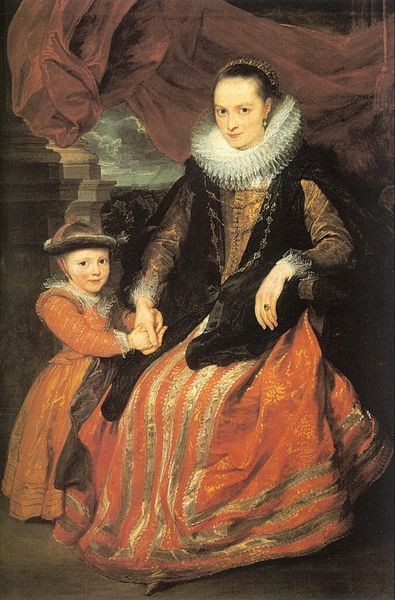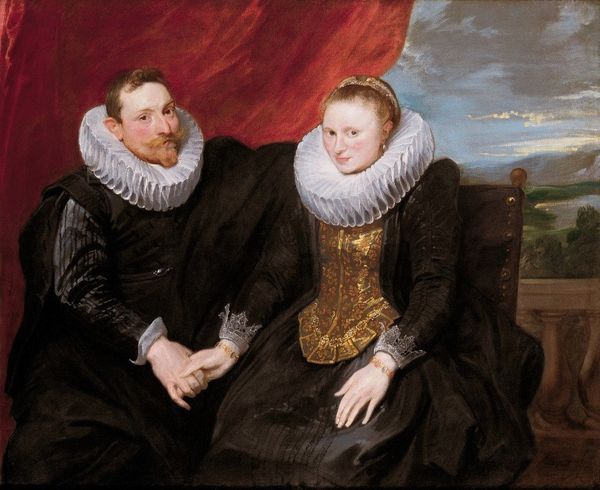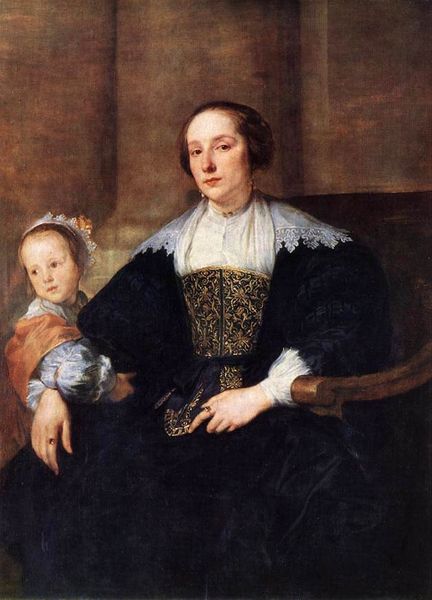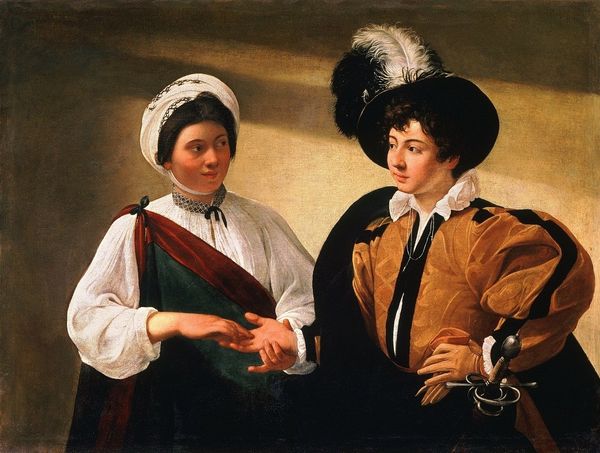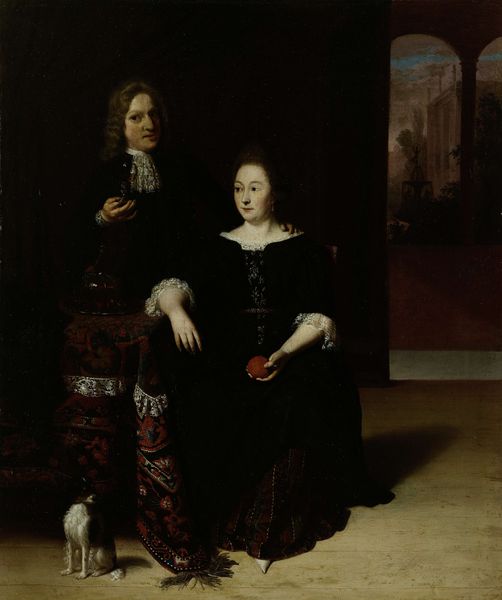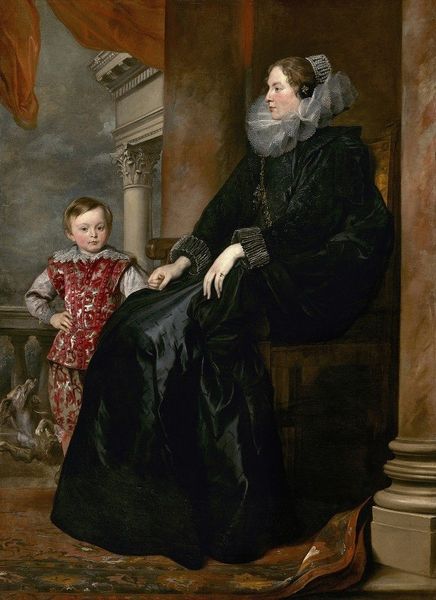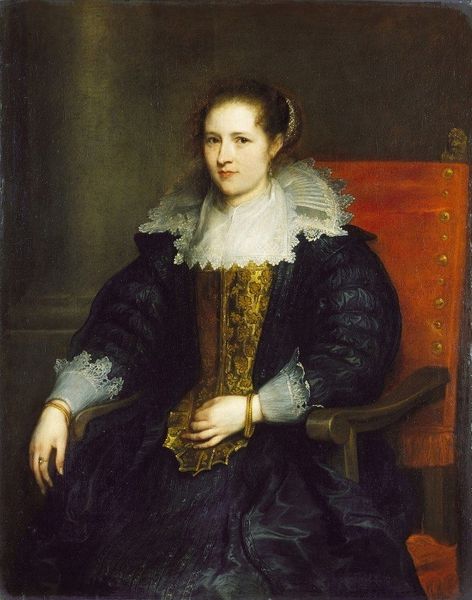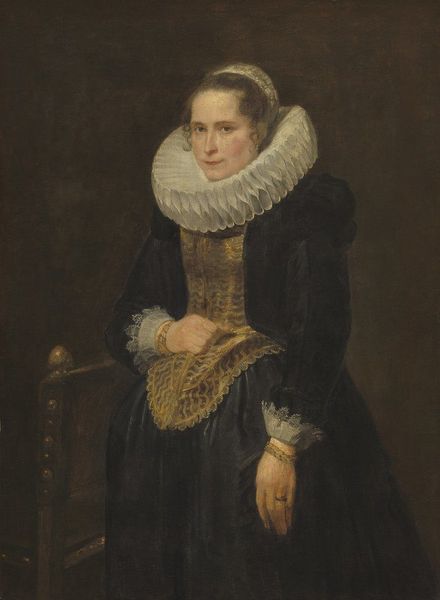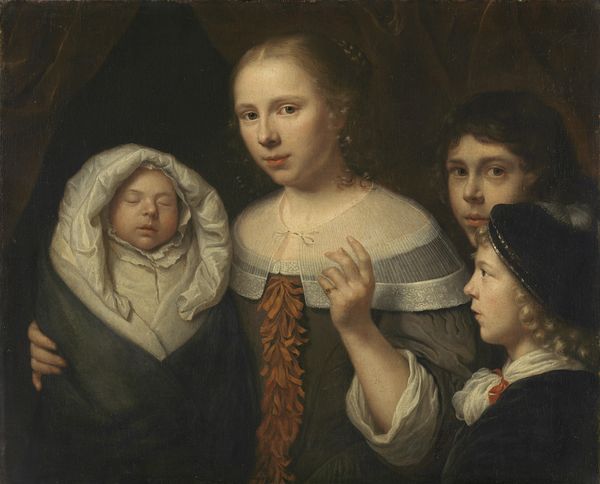
Portrait of a Young Married Couple 1620
0:00
0:00
jacobjordaens
Museum of Fine Arts (MFA), Boston, MA, US
painting, oil-paint
#
portrait
#
baroque
#
painting
#
oil-paint
#
figuration
#
group-portraits
#
genre-painting
#
realism
Dimensions: 125 x 93 cm
Copyright: Public domain
Curator: So, here we are, face to face with Jacob Jordaens's "Portrait of a Young Married Couple," painted around 1620. Editor: My first impression? Restrained. Even with those rather magnificent ruffs. There’s a certain somberness to their expressions, a seriousness that feels very deliberate. Curator: I agree; it’s not your typical, gushing display of marital bliss. Jordaens was Flemish, working in the Rubens's orbit, and this piece is interesting because it seems to pull away from the more overtly dramatic Baroque style. Instead, we see a quiet realism. The symbols though are all still here and quietly communicate a cultural belonging. Look at the entwined fingers. That's a recurring visual element meaning love, fidelity and an equal status between them. Editor: Fidelity seems heavy, hanging in the air like that foliage above the architecture. Speaking of those architectural elements—do you think this implies an actual garden setting, or more of a constructed, allegorical space? A world framed, if you will? Curator: That’s the charm, isn't it? It’s both real and idealized. The pillar, the hints of landscape, give it a sense of grounding, but also subtly elevate the couple. It suggests status, permanence. What truly fascinates me is how Jordaens captures a certain tension, maybe even an ambivalence, in their eyes. There are hints of personal sacrifice or trade-offs in marriage. Editor: Almost like they are staring to different possible worlds. What’s lovely, though, is her lace and his cuffs—are we thinking Dutch influence, where adornment becomes almost scientific observation, rather than a flourish of fantasy? Or what the lace meant at the time, when it was being applied in art and design. Curator: Precisely! And there’s a tension there, too. Ostentation versus the sober darkness of the clothing. Jordaens balances it all brilliantly. Editor: A quiet observation on love, labor and belonging then. And for me, I suppose what this moment might have meant for the woman involved. The future then as something opaque, or at least, a landscape they are trying to move toward together. Curator: Yes. He manages to touch upon not just the surface but an atmosphere of the deeper and almost invisible aspects of family life, marriage and social belonging that makes it so deeply relevant today. A masterpiece of understated communication.
Comments
No comments
Be the first to comment and join the conversation on the ultimate creative platform.


